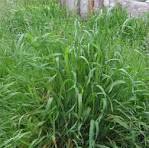
Introduction:
Quackgrass (Elymus repens) can be a formidable adversary in lawns and gardens due to its persistent rhizomatous growth. Successfully managing quackgrass often involves the strategic use of herbicides. In this guide, we will explore various herbicides and their application methods to effectively control and minimize the impact of quackgrass. eupatorium perfoliatum
Understanding Quackgrass Herbicides:
- Selective vs. Non-Selective Herbicides:
-
Selective Herbicides: These target specific types of plants without harming desirable species. For quackgrass, selective herbicides that focus on grassy weeds while sparing broadleaf plants are preferred.
-
Non-Selective Herbicides: These kill a wide range of plants and are often used when quackgrass is intertwined with undesirable vegetation. Care should be taken to avoid harming desired plants.
-
Commonly Used Herbicides for Quackgrass:
-
Glyphosate:
- Type: Non-selective herbicide.
- Mode of Action: Glyphosate disrupts the plant's ability to produce proteins, leading to its death.
- Application: Glyphosate is effective for quackgrass control but requires careful application to avoid damaging surrounding plants. Apply when quackgrass is actively growing.
-
Fluazifop-P-butyl:
- Type: Selective herbicide targeting grassy weeds.
- Mode of Action: Fluazifop-P-butyl interferes with the plant's growth processes, specifically affecting grasses like quackgrass.
- Application: Apply during the growing season, and follow product instructions to avoid harm to non-target plants.
-
Sethoxydim:
- Type: Selective herbicide for grassy weeds.
- Mode of Action: Sethoxydim inhibits the plant's ability to produce fatty acids, leading to its demise.
- Application: Use during the growing season, ensuring proper coverage of quackgrass while sparing desired vegetation.
-
Clethodim:
- Type: Selective herbicide effective against grassy weeds. Quackgrass
- Mode of Action: Clethodim disrupts cell membranes, causing cell leakage and plant death.
- Application: Apply when quackgrass is actively growing, and follow label instructions to avoid damage to non-target plants.
Best Practices for Herbicide Application:
-
Timing:
- Apply herbicides when quackgrass is actively growing for optimal absorption.
-
Weather Conditions:
- Choose calm, dry days for application to minimize herbicide drift.
-
Follow Instructions:
- Adhere strictly to product instructions regarding application rates, timing, and safety precautions.
-
Spot Treatment:
- Consider spot treatment for smaller infestations to minimize the impact on desirable plants.
Caution and Environmental Considerations:
-
Potential Harm to Non-Target Plants:
- Selective herbicides can harm desirable grasses, so use caution when applying near turf or ornamental grasses.
-
Impact on the Environment:
- Follow responsible herbicide use practices to minimize environmental impact. Avoid runoff into water bodies and be mindful of neighboring ecosystems.
Conclusion: Navigating quackgrass control with herbicides requires careful consideration of the type of herbicide, timing, and application methods. By choosing the right herbicide for the job and following best practices, homeowners and gardeners can effectively manage quackgrass infestations and maintain a healthier, more vibrant lawn or garden.


No comments yet